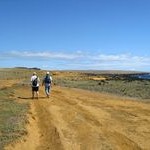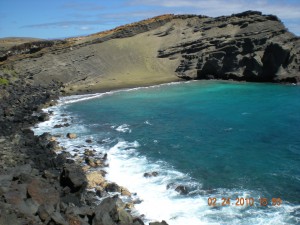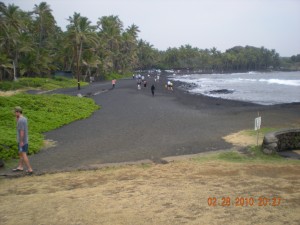Happy New Year!
May 2011 be a better year than 2010 was! The country needs some good news and to see some improvement in our current economic state of affairs. Then again, so could I.
It is also a good time to count our blessings, whether its still having a job while so many do not, or simply thankful for the family and extended ohana we surround ourselves with.
Have you ever stopped to ask yourself what your life would be like without these people being a part of it? Wealth is not always measured in monetary terms and while having money is great, having loved ones to share experiences with is what truly matters.
I don’t have a lot of close friends…never have. But, I am blessed to have two wonderful daughters, a great son-in-law, and a granddaughter who makes getting “old” seem worthwhile. I see them about once or twice a month, which isn’t a lot, but always remind myself that it could be worse.
I now live in North Carolina and my parents and sister still live in Hawaii. My parents live on the Big Island near Naalehu and my sister and her family live in Honolulu. I don’t get to see them near as much as I’d like to Sometimes, years go by without my being able to go back for a visit.
The last trip back was in February, 2010, and the whole family went back. My two daughters, son-in-law, granddaughter, and even my ex-wife. We spent a short time in Honolulu and the remainder of our trip on the Big Island.
We had a ball as I played tour guide and took them around the island over a 4-day period. As I have written in previous posts, its not something you want to try and do in a day or two. Besides, its not the easiest thing in the world getting four adults and a 1-year old ready to hit the road each morning.
I wouldn’t trade those memories for anything! The kids and I, minus my granddaughter, took the hour fifteen minute hike to Papalokea, green sand beach, and enjoyed watching the whales off shore near South point along the way.

Its a long and dusty hike to get to Papalokea Beach

Papalokea “Green Sand” Beach
We made several stops in the Kailua-Kona area, including the Puuhonua o Honaunau (Place of Refuge) and Puukohola Heiau National Historic Sites. They even took the short tour of the Kona Brewery, since “dad” was already the designated driver for the day.
We made the drive to Kapaau on the northern tip of the island and saw the King Kamehameha statue there, as well as enjoyed the drive along the Kohala mountains on Hwy 250. We arrived in Waimea (Kamuela) too late to catch lunch at the Hawaiian Style Restaurant, but will make up for it on another trip.
I’m not sure who enjoyed our stop at Akaka Falls the most. My granddaughter was just learning to walk and was determined to “walk” each of the many steps that you will encounter along the path to the viewing area.
We did not get to see lava flowing on this trip, but they took tons of pictures along the walk to the Thurston Lava Tube from the Park Headquarters. We came back later that evening, after having some time in Hilo, to try and catch the night time glow out of Haleakala Crater, but it was a rainy, wet and windy night…not to mention cold.
They had signed up as volunteers to help in the whale counting efforts, but that was the day of the tsunami warning, so we spent the morning like most of the residents of Hawaii, watching the notable lack of wave activity. Although, I must admit, it was kind of neat to watch the tide come in and out so many times in an hour.
While a little disappointed in the lack of action, we were also thankful that noone got hurt and no property damage was reported.
It seems the older I get, the more I enjoy my trips “home”. Upon returning to North Carolina this time, I started to think about starting a website on Hawaii to share my love of the islands, as well as give me ample opportunities to keep myself abreast of what was going on back there.
A few months later, I started this blog to supplement my entries on the website. If you have not yet visited it, I invite you to visit and share the information posted, www.myhawaiionline.com. There is also a free newsletter that you can subscribe to as well.
Well, that was last year! And, after spending a great Christmas with all of them, I can’t help but hope that 2011 brings us many more fond memories that we will share with one another for years to come.
May 2011 bring you many happy memories as well!












